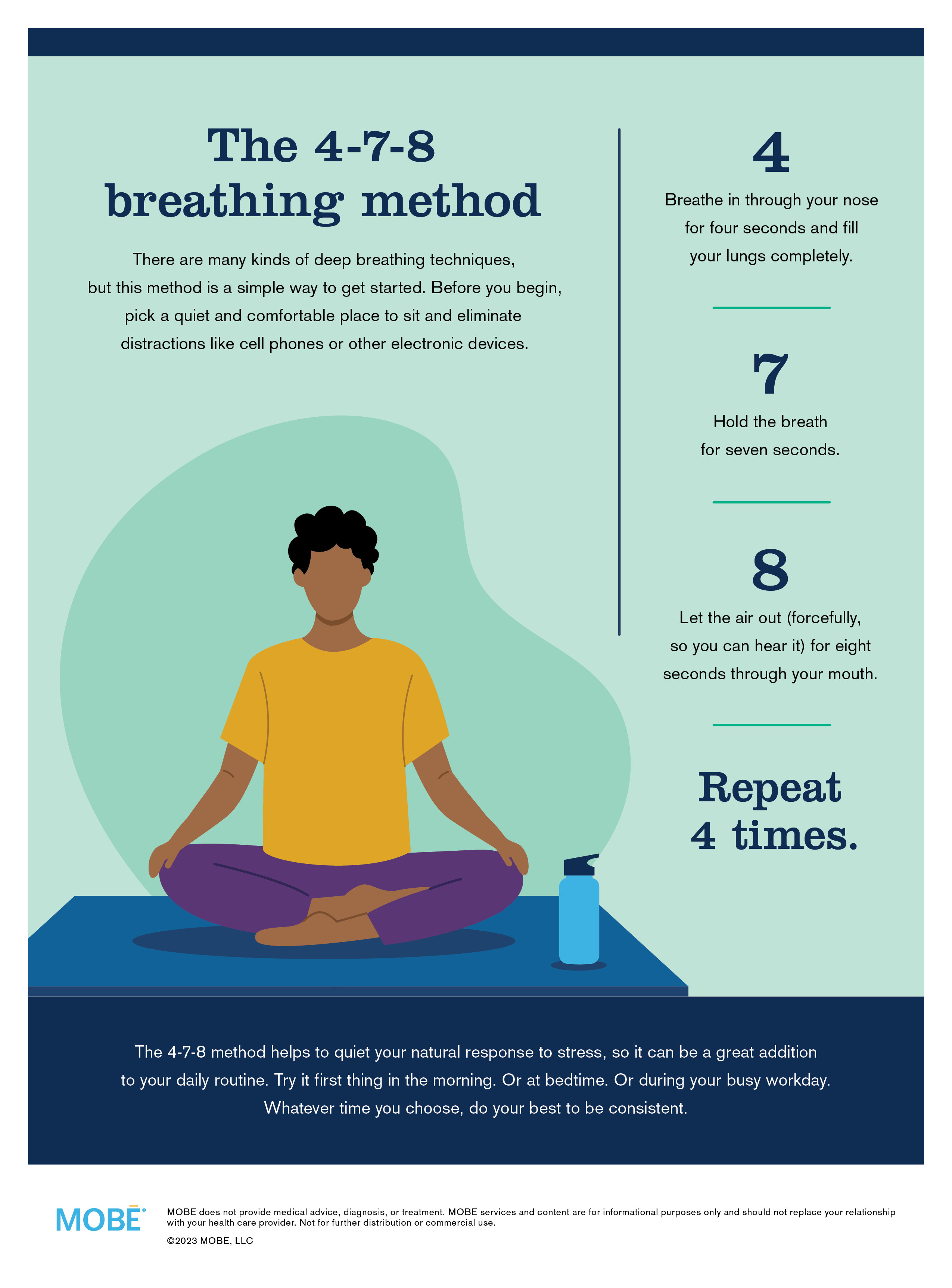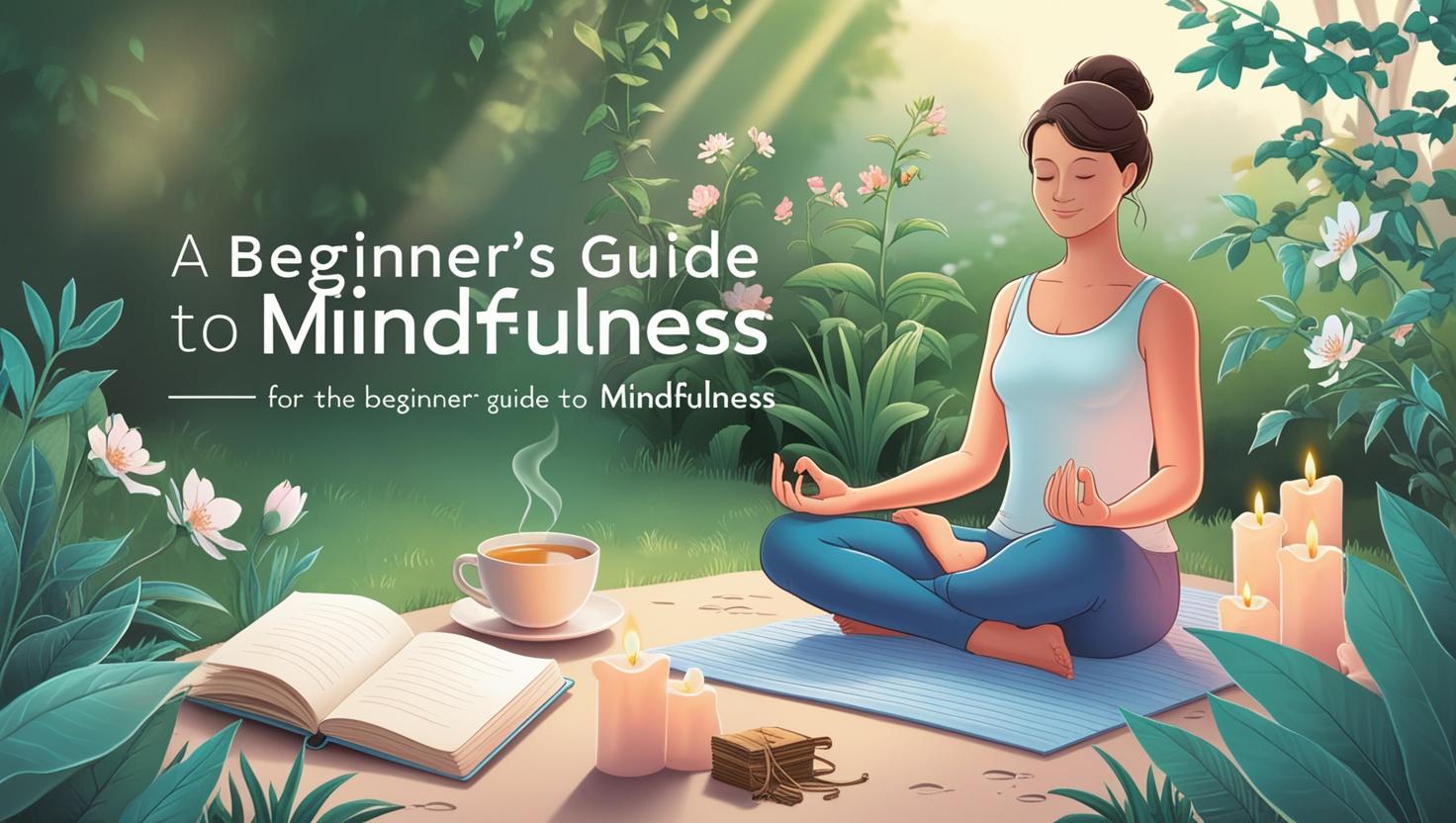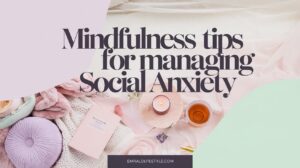Learning how to start practicing mindfulness doesn’t have to be overwhelming. In today’s fast-paced world, finding moments of peace and clarity can seem like an impossible task. Our minds are constantly bombarded with information, notifications, and endless to-do lists, leaving us feeling overwhelmed and disconnected. This comprehensive guide for mindfulness beginners offers a pathway to inner calm and improved mental well-being.
Whether you’re seeking relief from stress, looking to enhance your focus, or simply exploring mindfulness techniques for the first time, this mindfulness for beginners guide will walk you through everything you need to know to begin your journey with confidence.

What is Mindfulness?
For beginners, mindfulness is best understood as the practice of purposefully focusing your attention on the present moment while acknowledging and accepting your thoughts, feelings, and bodily sensations without judgment. This ancient practice, rooted in Buddhist traditions dating back over 2,500 years, has evolved into a secular approach to mental well-being that’s backed by extensive scientific research.
These mindfulness exercises for beginners emphasize three fundamental principles:
- Present-moment awareness: Focusing attention on what’s happening right now
- Non-judgmental acceptance: Observing experiences without labeling them as good or bad
- Gentle curiosity: Maintaining an open, interested attitude toward all experiences
Benefits of Practicing Mindfulness
Research consistently shows that learning how to start practicing mindfulness can transform various aspects of your life. The benefits of mindfulness include significant improvements in both mental and physical health.
Mental Health Benefits
- Reduced stress levels and anxiety symptoms through improved stress response
- Decreased symptoms of depression by breaking negative thought patterns
- Improved emotional regulation and better control over emotional reactions
- Enhanced cognitive flexibility and creative thinking
- Better focus and concentration in daily tasks
Physical Health Benefits
- Lower blood pressure and reduced risk of cardiovascular issues
- Improved sleep quality and reduced insomnia symptoms
- Stronger immune system function and faster healing
- Reduced chronic pain through better pain management
- Better digestive health and reduced gastrointestinal stress
- Decreased inflammation markers in the body
- Enhanced energy levels throughout the day
- Improved athletic performance and body awareness
Emotional Benefits
- Greater self-awareness and understanding of personal patterns
- Increased emotional intelligence and empathy
- Enhanced relationship satisfaction and communication skills
- Better decision-making abilities in challenging situations
- Improved resilience to life’s challenges
- Stronger sense of self-compassion and self-acceptance
- More authentic connections with others
- Greater overall life satisfaction

Research Highlight: A comprehensive 2014 study published in the Journal of Clinical Psychology found that mindfulness-based interventions resulted in a 58% reduction in anxiety symptoms and a 40% reduction in symptoms of depression. Additionally, a 2018 study in the Journal of Consulting and Clinical Psychology demonstrated that regular mindfulness practice can lead to a 35% reduction in work-related stress within eight weeks.
Getting Started with Mindfulness
Beginning your mindfulness practice doesn’t have to be complicated. Follow these detailed steps to establish a strong foundation for your journey.
Step 1: Find a Comfortable Space
Creating the right environment is crucial for developing a sustainable for a mindfulness for beginners. Your dedicated mindfulness space should be:
Physical Characteristics:
- Quiet and free from major distractions
- Well-ventilated with comfortable temperature
- Adequately lit (natural light is ideal)
- Clean and uncluttered
Potential Locations For Mindfulness For Beginners:
- A quiet corner in your bedroom
- A comfortable chair in your living room
- A peaceful spot in your garden
- A dedicated meditation room if available
- Any space where you feel at ease and unlikely to be interrupted
Essential Elements:
- Comfortable seating (chair, cushion, or mat)
- Timer or meditation app
- Optional items like candles or incense
- A light blanket for comfort

Step 2: Start with Your Breath
The breath is your anchor to the present moment, serving as a constant companion in your mindfulness practice. Here are several breathing techniques to try:
Basic Breathing Exercise (4-7-8 Technique):
- Sit comfortably with your back straight
- Breathe in slowly through your nose for 4 counts
- Hold your breath for 7 counts
- Exhale slowly through your mouth for 8 counts
- Repeat this cycle 4-5 times

Alternative Breathing Practices:
- Box Breathing: Equal counts (4-4-4-4) for inhale, hold, exhale, and hold
- Counting Breaths: Count each breath cycle from 1 to 10, then start over
- Three-Part Breath: Focus on breathing into belly, ribs, and chest
- Simple Awareness: Just observe your natural breath without changing it
Step 3: Use Guided Meditations
Taking advantage of available resources can significantly enhance your practice:
Recommended Apps:
- Headspace: Excellent for beginners with structured programs
- Calm: Features a variety of guided meditations and sleep stories
- Insight Timer: Offers thousands of free meditations
- Ten Percent Happier: Includes practical approaches to mindfulness
Other Resources:
- YouTube channels featuring free guided meditations
- Local mindfulness groups or classes
- Online mindfulness courses
- Podcasts focused on meditation and mindfulness

Step 4: Incorporate Mindfulness into Daily Activities
Make mindfulness a natural part of your day by practicing during routine activities. Here are detailed approaches for different situations:
1. Mindful Eating
- Take small bites and chew slowly
- Notice the flavors, textures, and temperatures
- Observe your hunger and fullness cues
- Express gratitude for your food
- Avoid distractions while eating
2. Mindful Walking:
- Feel each step as your feet touch the ground
- Notice the movement of your legs and arms
- Observe your surroundings with curiosity
- Pay attention to the rhythm of your walking
- Stay present with physical sensations
3. Mindful Listening:
- Focus fully on conversations without planning your response
- Notice the tone and rhythm of others’ voices
- Pay attention to periods of silence
- Observe your own reactions without judgment
- Practice active listening skills
4. Mindful Working:
- Take regular mindful breaks
- Focus on one task at a time
- Notice physical tension while working
- Practice mindful transitions between tasks
- Set mindful intentions for your work

Step 5: Set Realistic Goals For Mindfulness For Beginners
Establishing clear and achievable goals is crucial when learning how to start practicing mindfulness. Begin with manageable commitments and gradually build your practice over time.
Starting Goals for Mindfulness Beginners:
- 5-minute daily meditation sessions – Starting with just 5 minutes per day can help you build the habit of regular mindfulness practice. This short duration is accessible even for those with busy schedules.
- One mindful meal per day – Bringing your full attention to the experience of eating, being present with your senses, can be a great way to incorporate mindfulness into your daily routine.
- 10-minute mindful walking – Taking a short walk and focusing on the physical sensations of each step is a portable mindfulness exercise you can do anytime.
- Regular check-ins throughout the day – Set reminders to pause, take a few deep breaths, and bring your awareness to the present moment during your daily activities.
Progressive Goals for Developing a Mindfulness Practice:
- Increase meditation duration gradually – Over time, work up to 10, 15, or 20 minute meditation sessions as you get more comfortable with the practice.
- Add multiple practice sessions per day – Once the habit is established, try incorporating mindfulness breaks a few times throughout your day.
- Incorporate more mindful activities – Beyond meals and walks, look for opportunities to bring present-moment awareness to daily tasks like showering, washing dishes, or gardening.
- Join group meditation sessions – Participating in a community of practitioners can provide motivation and support for your mindfulness journey.
- Attend mindfulness workshops or retreats – Investing in more structured learning experiences can deepen your understanding and commitment to the practice.
The key is to start small and build sustainable habits. By setting realistic goals and incrementally increasing your mindfulness practice, you’ll be able to make it a lasting part of your lifestyle. Remember, the journey is just as important as the destination when it comes to cultivating greater present-moment awareness.
Mindfulness Techniques for Beginners
Body Scan Meditation
The body scan is a foundational mindfulness practice that helps develop body awareness and relaxation:
- Lie down or sit comfortably in a quiet space
- Close your eyes and take several deep breaths
- Begin at your toes, noticing any sensations present
- Gradually move your attention up through your body:
- Feet and ankles
- Legs and knees
- Hips and pelvis
- Back and abdomen
- Chest and shoulders
- Arms and hands
- Neck and throat
- Face and head
- Notice areas of tension, comfort, or neutrality
- If your mind wanders, gently return to the last body part you were focusing on
- Complete the practice by becoming aware of your body as a whole
Mindful Journaling
Keep track of your mindfulness journey through structured writing:
Daily Entries Should Include:
- Date and time of practice
- Duration of meditation or mindful activity
- Physical sensations and emotions noticed
- Challenges encountered and how they were handled
- Insights or revelations during practice
- Questions or areas for further exploration
Journaling Prompts on how to start practicing mindfulness:
- “What sensations am I experiencing right now?”
- “What emotions have I noticed today?”
- “How did my practice affect my day?”
- “What challenges did I face in being mindful?”
- “What am I grateful for in this moment?”
Visualization Techniques
Create a mental sanctuary through guided imagery:
Steps for Visualization:
- Choose a peaceful setting (real or imagined)
- Close your eyes and take several deep breaths
- Begin building the scene in your mind:
- Notice visual details like colors and shapes
- Add sounds that would be present
- Include smells and sensations
- Feel the temperature and air quality
- Spend 5-10 minutes exploring your visualization
- Return gently to regular awareness
Mindful Breathing Variations
Master these fundamental breathing techniques:
Diaphragmatic Breathing:
- Place one hand on your chest and one on your belly
- Breathe so that your belly expands more than your chest
- Focus on the movement of your hands
- Notice the quality of each breath
Square Breathing:
- Visualize tracing a square as you breathe
- Inhale for 4 counts (up)
- Hold for 4 counts (across)
- Exhale for 4 counts (down)
- Hold for 4 counts (across)
Ocean Breath (Ujjayi):
- Slightly constrict your throat
- Create a soft sound like ocean waves
- Maintain this sound through inhale and exhale
- Keep your breathing smooth and controlled

Common Challenges on how to start practicing mindfulness and How to Overcome Them
As a beginner practicing mindfulness, you might encounter these common challenges:
Managing Distractions
Distractions are a natural part of mindfulness practice. Here’s how to work with them:
External Distractions:
- Use earplugs or white noise if needed
- Practice at quiet times of day
- Inform others not to interrupt
- Turn off phone notifications
- Create a dedicated practice space
Internal Distractions:
- Label thoughts as “thinking” and return to breath
- Use counting techniques to maintain focus
- Accept that mind-wandering is normal
- Practice self-compassion when distracted
- View distractions as opportunities to practice

Dealing with Impatience
Building mindfulness takes time and patience:
Helpful Approaches:
- Focus on the process rather than results
- Celebrate small improvements
- Keep a progress journal
- Remember everyone’s journey is different
- Practice self-compassion
- View setbacks as learning opportunities
Maintaining Consistency
Establish a sustainable practice routine:
Practical Tips:
- Set a regular practice schedule
- Start with shorter, manageable sessions
- Use reminders on your phone
- Join a mindfulness community
- Track your practice
- Create accountability partnerships
- Reward yourself for consistency

Conclusion: Your Journey into Mindfulness Practice
Starting a mindfulness practice is a powerful step toward improving your mental, emotional, and physical well-being. Remember that everyone’s journey in learning how to start practicing mindfulness is unique, and there’s no “right” way to approach it. The key is to begin with simple mindfulness exercises and gradually build your practice.
As you continue your mindfulness journey, you’ll likely discover that the benefits extend far beyond the meditation cushion, influencing how you approach challenges, relationships, and daily life. The key is to begin with small, manageable steps and gradually build upon your practice.
Take Action Today
- Subscribe to our newsletter for weekly mindfulness techniques and exercises
- Share this mindfulness guide for beginners with friends who might benefit
- Join our mindfulness community to connect with fellow practitioners
- Download our free mindfulness tracking worksheet to monitor your progress
- Start with just five minutes of mindfulness practice today
Remember, every moment is an opportunity to practice mindfulness, and every breath is a chance to begin again. Your journey to greater awareness and peace of mind starts with this first step.







